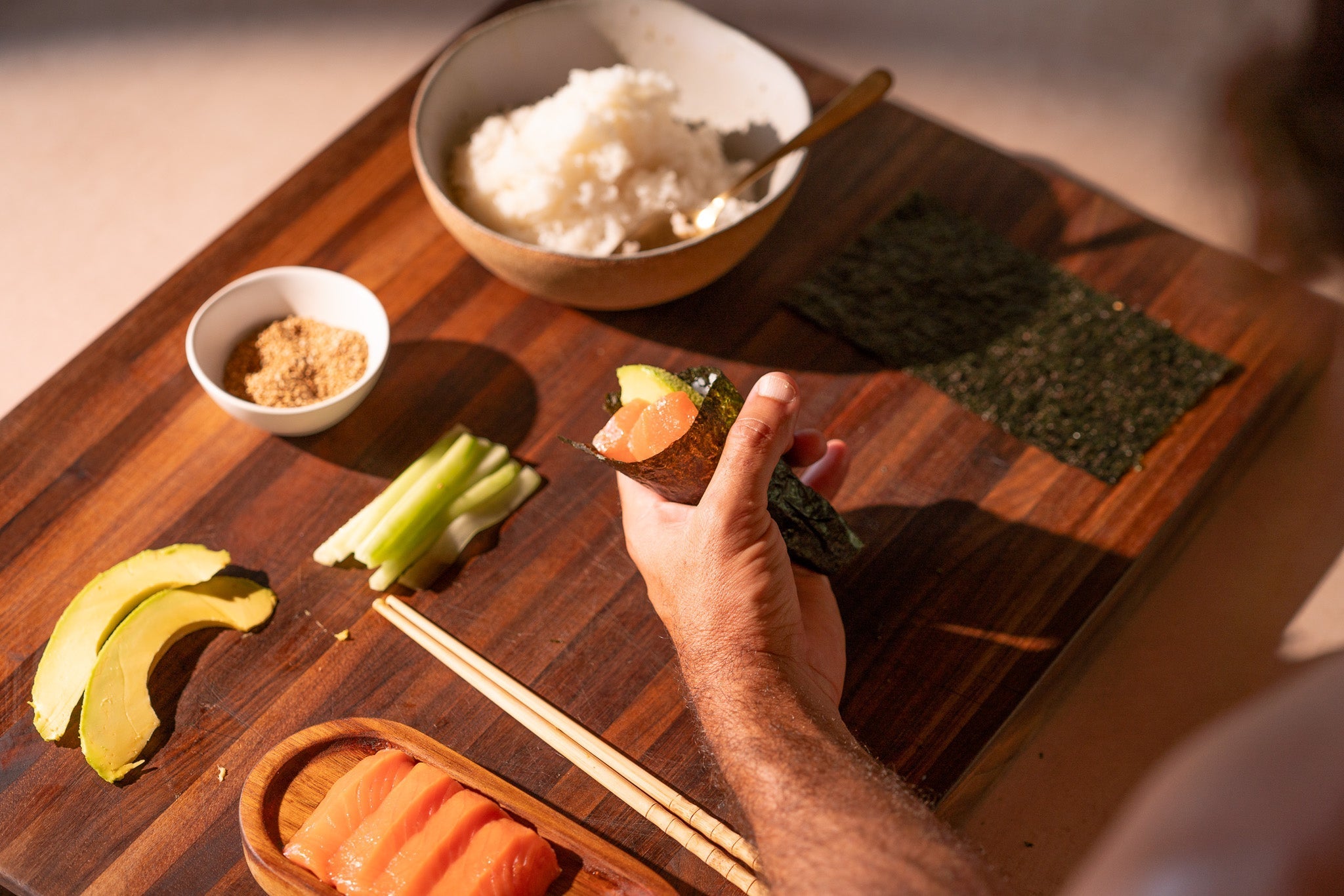
Sashimi
Seafood
Rated 5.0 stars by 1 users
Unlocking Freshness: How to Defrost Sushi-Grade Seafood
Learn how to properly defrost individually vacuum-packed sushi-grade seafood for the best experience. Sourced from regenerative farms, Seatopia's seafood is processed at peak freshness, vacuum-sealed, and blast-frozen to lock in quality and prevent large ice crystals from forming. Shipped directly to your door with dry ice, these defrosting methods ensure your fish retains its fresh texture, flavor, and nutritional value.

Directions
1. 24hr Slow Defrost Method (Paper Towels)
-
 1.
1.Remove the fillets from their vacuum-sealed packaging while still frozen.
-

-
 3.
3.Place the wrapped fillets on a wire rack set over a tray to allow proper drainage.
-
 4.
4.Refrigerate overnight, allowing the fillets to defrost slowly, ideally for 24 hours.
2. Quick Defrost Method (Ice Bath)
-
 5.
5.Fill a large bowl with ice and cold water.
-
 6.
6.Submerge the vacuum-sealed fillets in the ice bath.
-
 7.
7.Let the fish defrost for 15 to 30 minutes or until fully thawed. Avoid using warm water, as it can damage the texture and quality of the fish.
Recipe Note
A Celebration of Freshness and Nutrition
This is more than just defrosting—it’s the first step in enjoying Seatopia’s premium, nutrient-dense seafood. Thoughtfully frozen at the regenerative farms we source from, each fillet retains its fresh flavor, delicate texture, and high levels of omega-3 fatty acids. By defrosting properly, you’re ensuring every meal is a celebration of regenerative aquaculture, health, and culinary artistry.
With Seatopia, you’re not just preparing seafood; you’re participating in a movement that prioritizes ecosystem restoration and mindful eating. Every step, from sourcing to defrosting, supports your health while fostering gratitude for the planet’s bounty.
Tips for Defrosting Sushi-Grade Seafood
Slow Defrosting: For the best results, always defrost Seatopia seafood in the refrigerator overnight. Blast freezing at the regenerative farms creates small, uniform ice crystals that preserve the fish’s structure and texture. Slow defrosting helps these crystals melt gradually, preventing moisture loss and maintaining the fish’s premium quality.
Quick Defrosting: If time is short, place vacuum-sealed seafood in a bowl of ice-cold water for 15–30 minutes. Avoid warm water, as it can cause uneven thawing and compromise the fish’s texture and flavor.
Shrimp & Scallop Defrosting: Keep seafood sealed or covered and thaw slowly in the refrigerator until fully defrosted (about 18–24 hours). If ice crystals are present, you can briefly rinse under cold water before preparing. Avoid thawing at room temperature or in warm water to maintain food safety and sushi-grade quality.
Learn More
Discover Seatopia’s Clean Seafood Standards: Learn how our seafood is rigorously tested for microplastics, mercury, and other toxins to ensure it’s safe for raw consumption and meets the highest standards of purity and regenerative practices.
Why Choose Regenerative Seafood?: Explore the benefits of seafood raised in regenerative aquaculture systems, where fish are nourished with micronutrient-rich diets in pristine, natural environments. Visit: Seatopia.fish











Share:
Seafood 301: How to Salt-Bake Whole Rainbow Trout
Turbot Crudo recipe w/ Heirloom Tomatoes & Pickled Shallots